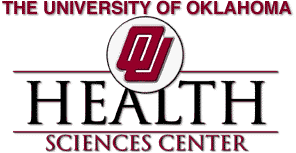Hip and pelvic region (Smith, Weiss, & Lehmkuhl, 1996, pp.267-268)
- Posterior muscles
- Gluteus maximus
- Biceps femoris
- Semitendinosus
- Semimembranosus
- Anterior muscles
- Rectus femoris
- Sartorius
- Tensor fascia latae
- Iliopsoas
- Pectineus
- Lateral muscles
- Gluteus medius and minimus
- Tensor fascia latae
- Piriformis
- Medial muscles
- Adductor magnus
- Adductor longus
- Adductor gracilis
- Adductor brevis
- Pectineus (see page 285)
Knee (Smith, Weiss, & Lehmkuhl, 1996, p.303)
- Extensors
- rectus femoris
- vastus lateralis
- vastus medialis
- vastus intermedius
- Flexors
- biceps femoris
- semitendinosus
- semimembranosus
- gastrocnemius
- popliteus
Ankle and foot (Smith, Weiss, & Lehmkuhl, 1996, pp.344-355)
(Muscles that cross the ankle and subtalar joint are attached proximally to structures outside the foot, and so are termed extrinsic foot muscles. The term distinguishes them from intrinsic foot muscles (Smith, Weiss, & Lehmkuhl, 1996, pp. 355-356), knowledge of which is not part of the course's objectives.)
- Triceps surae
- tibialis posterior
- flexor digitorum longus
- flexor hallucis longus
- peroneus longus and brevis
- tibialis anterior
- extensor hallucis longus
- extensor digitorum longus
Anterior muscles of the trunk (Smith, Weiss, & Lehmkuhl, 1996, pp.377-380, 384-387)
- Scalenes (anterior and middle)
- Sternocleidomastoid
- Intercostals (external and internal)
- Diaphragm
- Abdominals:
Posterior muscles of the trunk (Smith, Weiss, & Lehmkuhl, 1996, pp.380-383)
Extensors/Ipsilateral Rotators:
- Erector spinae (sacrospinalis)
- spinalis
- longissimus
- iliocostalis
- Splenius Capitis et cervicis
Extensors/Contralateral Rotators (transverso-spinalis muscles)
- Semispinalis
- Multifidus
- Rotatores
Quadratus Lumborum
Muscles of the shoulder complex (Smith, Weiss, & Lehmkuhl, 1996, pp. 236-252)
- Muscles from axial skeleton to scapula and clavicle:
- Serratus anterior
- Trapezius
- Rhomboideus major and minor
- Pectoralis minor
- Levator scapulae
- Muscles from scapula and clavicle to humerus:
- Deltoid
- Rotator cuff
- supraspinatus
- infraspinatus
- teres minor
- subscapularis
- Teres major
- Coracobrachialis
- Biceps brachii (long head)
- Triceps brachii (long head)
- Muscles from axial skeleton to humerus:
- Latissimus dorsi
- Pectoralis major
Muscles of the elbow and radioulnar joints (Smith, Weiss, & Lehmkuhl, 1996, pp. 163-172)
- Elbow flexors
- biceps brachii
- brachialis
- brachioradialis
- pronator teres
- Elbow extensors
- Radioulnar supinators
Smith, Weiss, & Lehmkuhl (1996, p.171) list muscles that supinate the radioulnar joint:
- biceps brachii
- supinator
- abductor pollicis longus
- extensor pollicis brevis
- extensor indicis proprius
- Radioulnar pronators
Smith, Weiss, & Lehmkuhl (1996, p.172) list muscles that pronate the radioulnar joint:
- pronator teres
- pronator quadratus
- flexor carpi radialis (see also Kendall, 1993, p.258)
- extensor carpi radialis longus (see also Kendall, 1993, p. 268)
Muscles of the wrist and hand (Smith, Weiss, & Lehmkuhl, 1996, pp. 191-198) are listed on another page.

